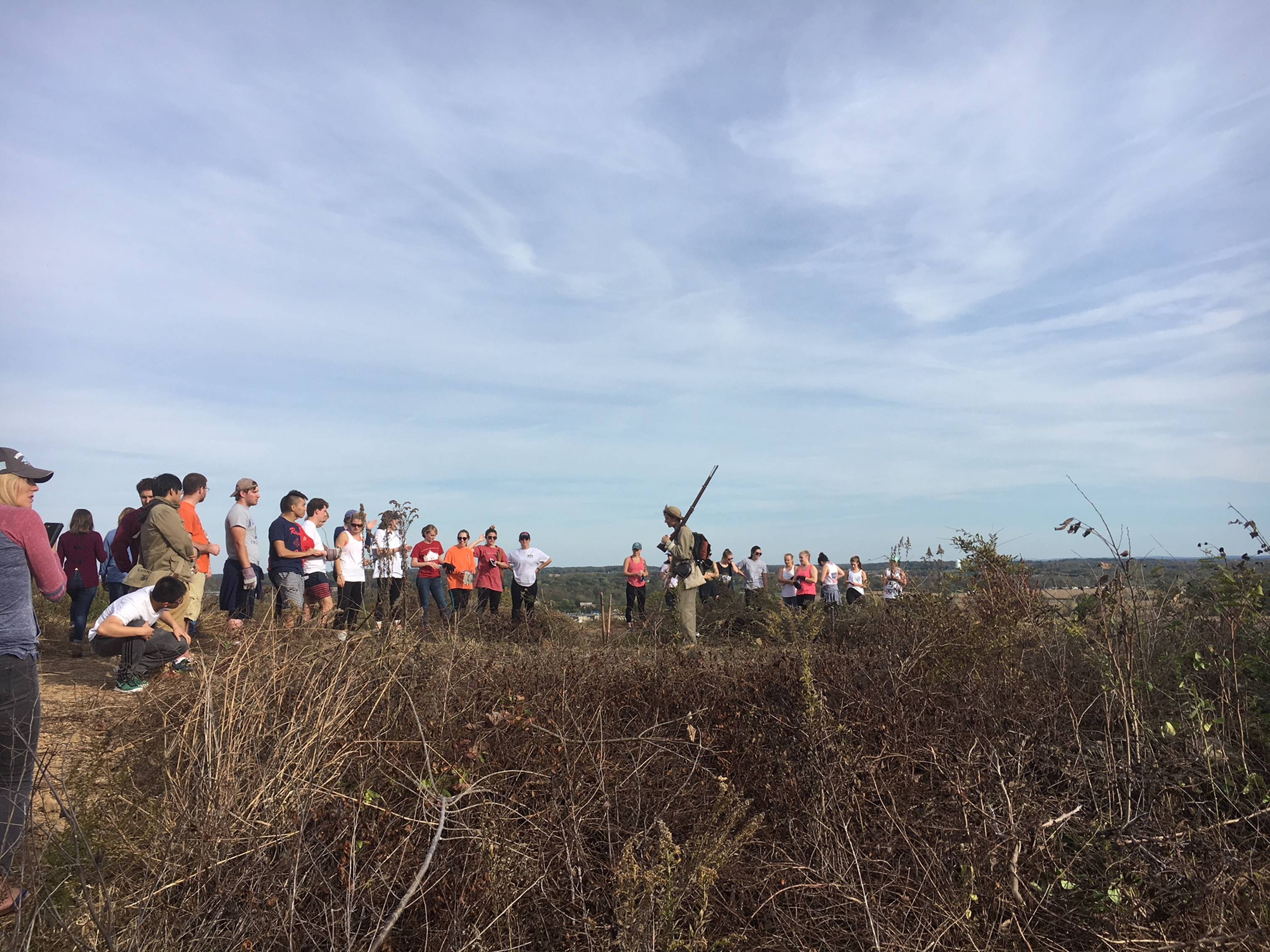Don’t Shrink Our National Monuments

Gettysburg students recently helped perform maintenance at the battlefields (Photo courtesy of Ned Hughes)
By Cassandra Shields, Guest Columnist
Living in Gettysburg brings our community closer to the National Park system than most towns in the northeast. Yes, we as residents complain about the tourists, and the fanfare for the park’s overwhelming presence in our town grates against our daily activities. Yet we also benefit from our proximity to this national treasure. Local communities rely on the park for the tourism revenue while college students and other locals are more able to explore the history of the land in their background. Classes in the biology and environmental studies departments use the park as an outdoor classroom, giving students crucial experience doing field work.
Despite being a specific type of national park, the Gettysburg National Military park keeps in line with the progressive ethos of national conservation designations all over the country: to preserve and to teach. In interacting with the Gettysburg National Military Park, we know that it is inherently important to learn from and respect our history.
President Trump, however, has not quite learned this lesson, it appears.
In keeping with his path to undo Obama’s legacy, President Trump signed an Executive Order in April of this year to put 25 national monuments under review by the Secretary of Interior. Although President Trump claims that this review is necessary for erasing abuses of the Antiquities Act, it is clear that his motivation is purely down to increasing his rapport with rural blue-collar workers and the industries by shrinking or getting rid of national monuments.
Yet in reviewing these designations, he also ignores many of the intricacies inherent in national monument designations. Most national monument designations come from a single piece of legislation, The Antiquities Act of 1906. This act, signed by President Theodore Roosevelt, gives the president the unilateral power to designate federally owned land that has cultural, historic, or scientific significance.
More importantly, the act was to protect the cultural sites of natives from degradation and looting, but there was also a strong conservation effort to preserve these lands for future generations. National Monument designations typically have more lax regulations than those of national parks, but have a strong management hand to protect the lands. Up until now, these designations have been anything but political. Presidents of both parties have designated national monuments; even President George W. Bush, a staunch de-regulator, designated national monuments.
The designation of Bears Ears in December of last year has opened a debate, though, as to how far a president can go with this legislation. Despite having open debate on designating the lands for years before, many in intensive land use industries have said that this is a federal land grab which has created a “jobs versus conservation” argument wherein the designation will shut down all industry in the area.
This argument, though, is based on logical fallacy.
First and foremost, the lands included in national monument designations are always federal lands and all land permits (such as grazing) continue to be upheld.
Therefore, the economy in the area will benefit from the increased tourism that the designations bring.
It’s also worth noting that, in many of the national monuments, increasing land usage isn’t particularly feasible or sustainable. Yet even though these designations don’t adversely affect jobs, Trump chooses to hear these voices over other more valid perspectives to increase his political favor with industry.
The perspectives he ignores have been distinctly underrepresented throughout American history.
Native Americans have the greatest claims to the lands currently being debated. It is their ancestral and cultural sites that lie within those lands. They are in overwhelming support of the designations in Utah as they see it as a way to protect their culture from the looting and degradation that occurred throughout the 19th century. Many see this as the only way to truly save these pieces of their history. By ignoring this perspective, Trump ignores the foundation upon which this act was created.
Beyond the human perspectives, though, lie the fates of many species. National monument designations have served as a way to conserve land without direct input from congress. Species such as the desert tortoise rely on national monuments for critical habitat.
Though the review process has been closed and Trump has announced his decision to shrink at least two monuments, the fight is not yet done. What can we as citizens do to protect these national monuments?
We can contact Congress directly or support the efforts of conservation and native groups in their legal fight against the shrinking of national monuments. We can make an effort to make these perspectives heard before more degradation to these lands happens. Although those of us who live in the northeast may never visit the large national monuments of the west, we have a stake in the stewardship of our public lands as citizens of the United States.
